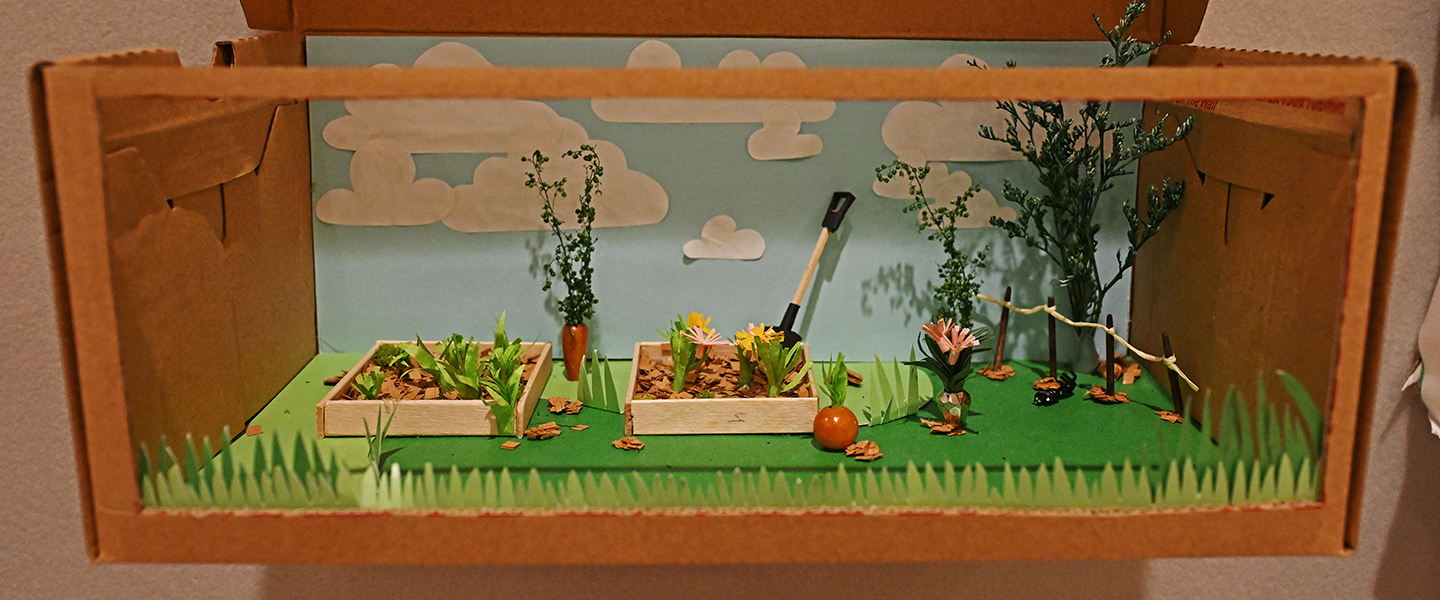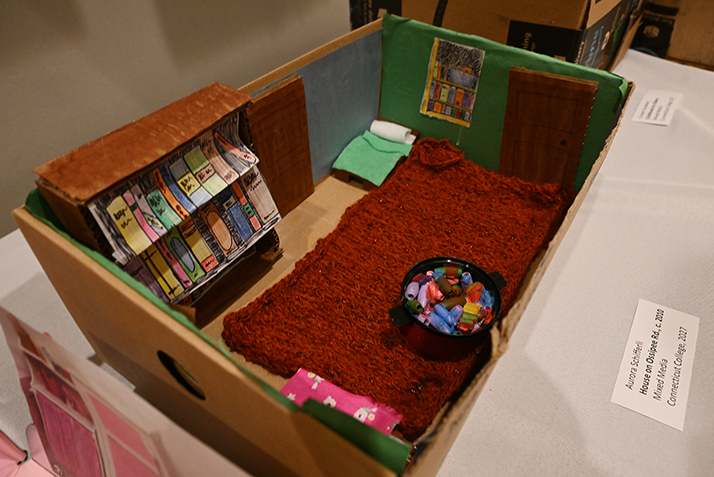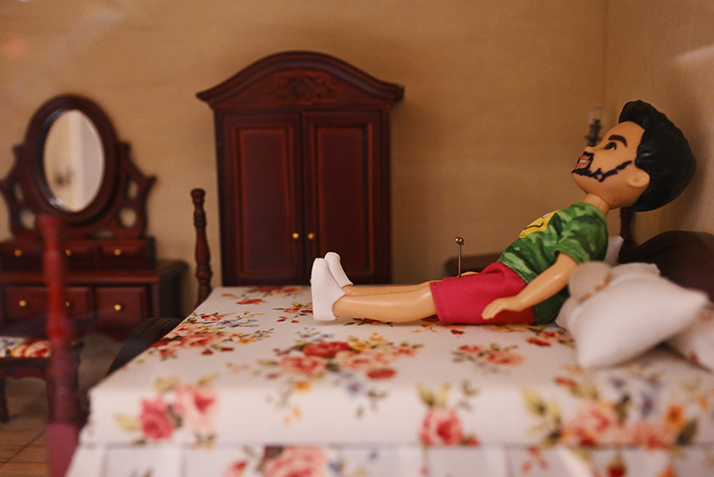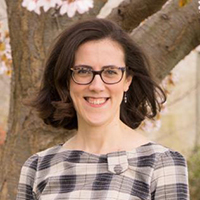
Thinking Inside the Box
Students curate their childhoods for Lyman Allyn Art Museum exhibition
Students in Visiting Associate Professor of Human Development Salma Siddique’s first-year seminar, “Psychoanalytic Anthropology in Human Development,” went back in time to create shoebox-sized dioramas for a pop-up exhibition at the Lyman Allyn Art Museum titled “Timeless Ties: The Art of Childhood,” which will be on display until Dec. 3.
Siddique, who joined the faculty in 2022, is teaching the seminar with Kathryn O’Connor, director of the Child Development Lab School at Connecticut College. Throughout the semester, they taught students about the anthropological concept of indigenous epistemologies, defined as the knowledge or understanding of people who are native to a place.
Siddique explained, “We feel and think about our place in the world with objects, like a child with a toy or an adolescent with their first shiny new iPhone. The significance of these cultural artifacts in expressing, and preserving the richness of, lived experiences within indigenous communities is intrinsically linked to ways of seeing and encountering the world. The objects serve as a form of cultural revitalization, fostering a deeper understanding of ourselves in relation to others.”
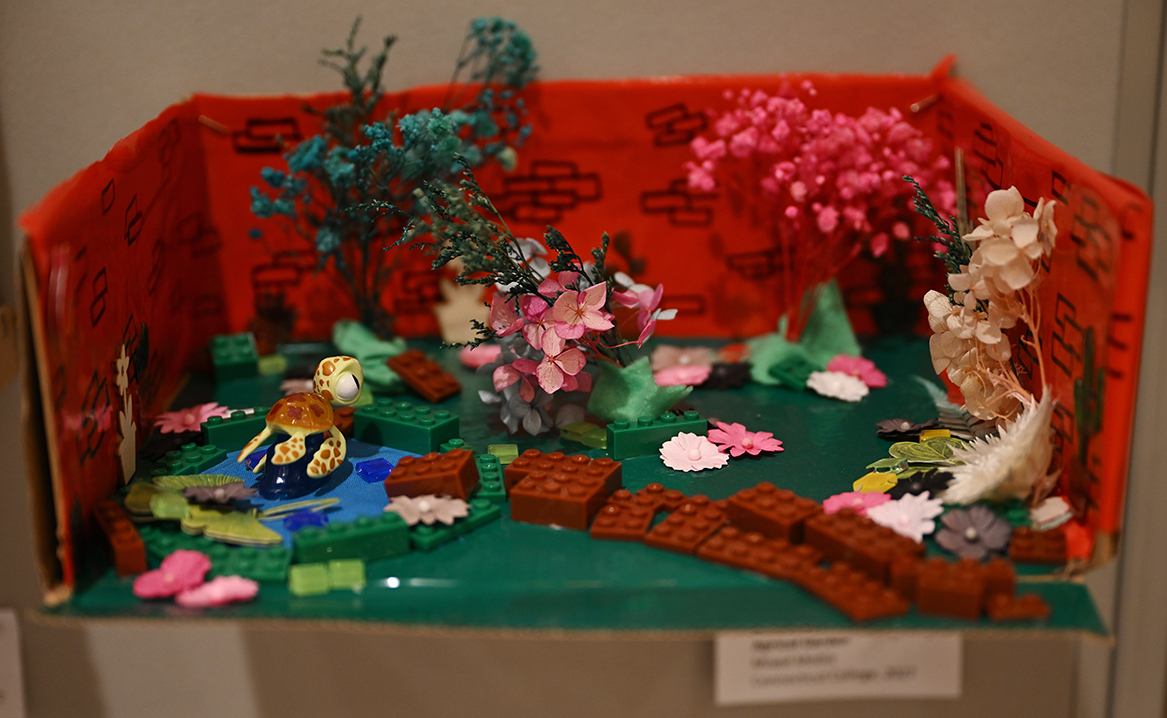
For the diorama project, Siddique prompted students to reflect deeply on their personal narratives and their own ways of interpreting the world as passed down through their families and as they relate to a sense of place.
“Culture holds a profound meaning within indigenous communities, encapsulating narratives, traditions and collective memories,” Siddique said. “Through the deliberate use and arrangement of cultural objects, the diorama method provides a medium for indigenous communities to articulate their histories, values and worldviews.”
Siddique led the way by contributing her own diorama under the title “[M]other.” She said she sought to evoke her experience of being born at home and used vibrant colors and textures to reimagine the walls, which represented her mother’s womb. About two dozen miniature suitcases represented the complexities and emotions associated with migration, movement and displacement. The diorama also features a gallery of preschool moments and family photos, inviting viewers to engage with different aspects of Siddique’s personal history.
Alina Khan ’27, whose diorama is titled “Apricot Garden” and is decorated with green and red paint, miniature turtles, Legos and sprigs of colorful florals representing trees, said she was “fairly intimidated” by the project at first. Khan explained, “Almost everyone, it seemed, had decided to make their childhood rooms, which was something I had never had—or perhaps had too many of. In the end, I decided to go with the garden because of one reason: It had made me realize for the first time that every time I moved, I left something behind. The garden is, in a way, a symbol of all the things I’ve ever had to leave behind.”
In recent years, Khan began to question the effects of her transient childhood and dove into relevant research, which triggered an interest in officially studying psychology in college. “More and more, I have noticed within myself escapist tendencies and a consistent avoidant form of attachment in my relationships, both of which are something I work hard to mend,” she reflected.
